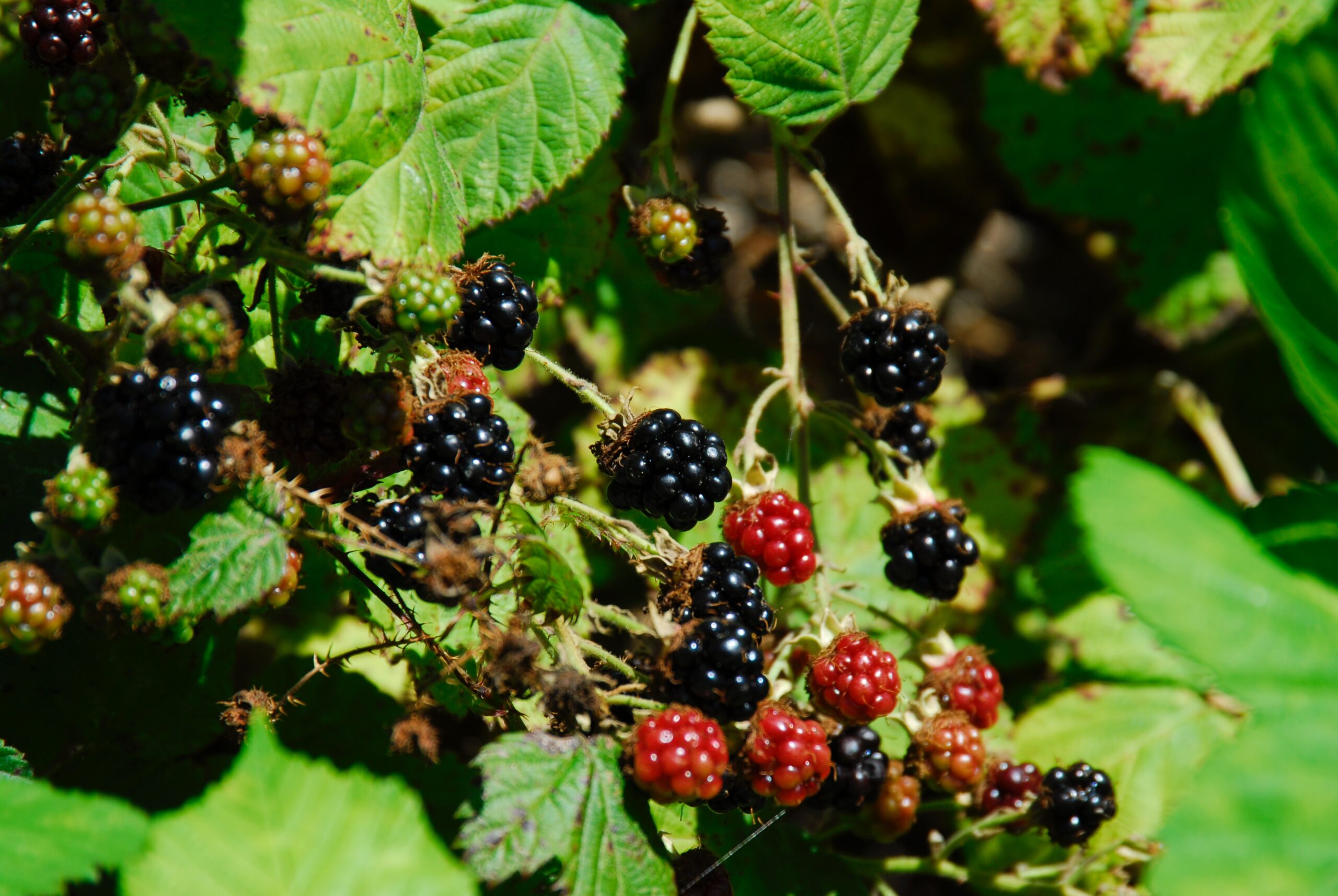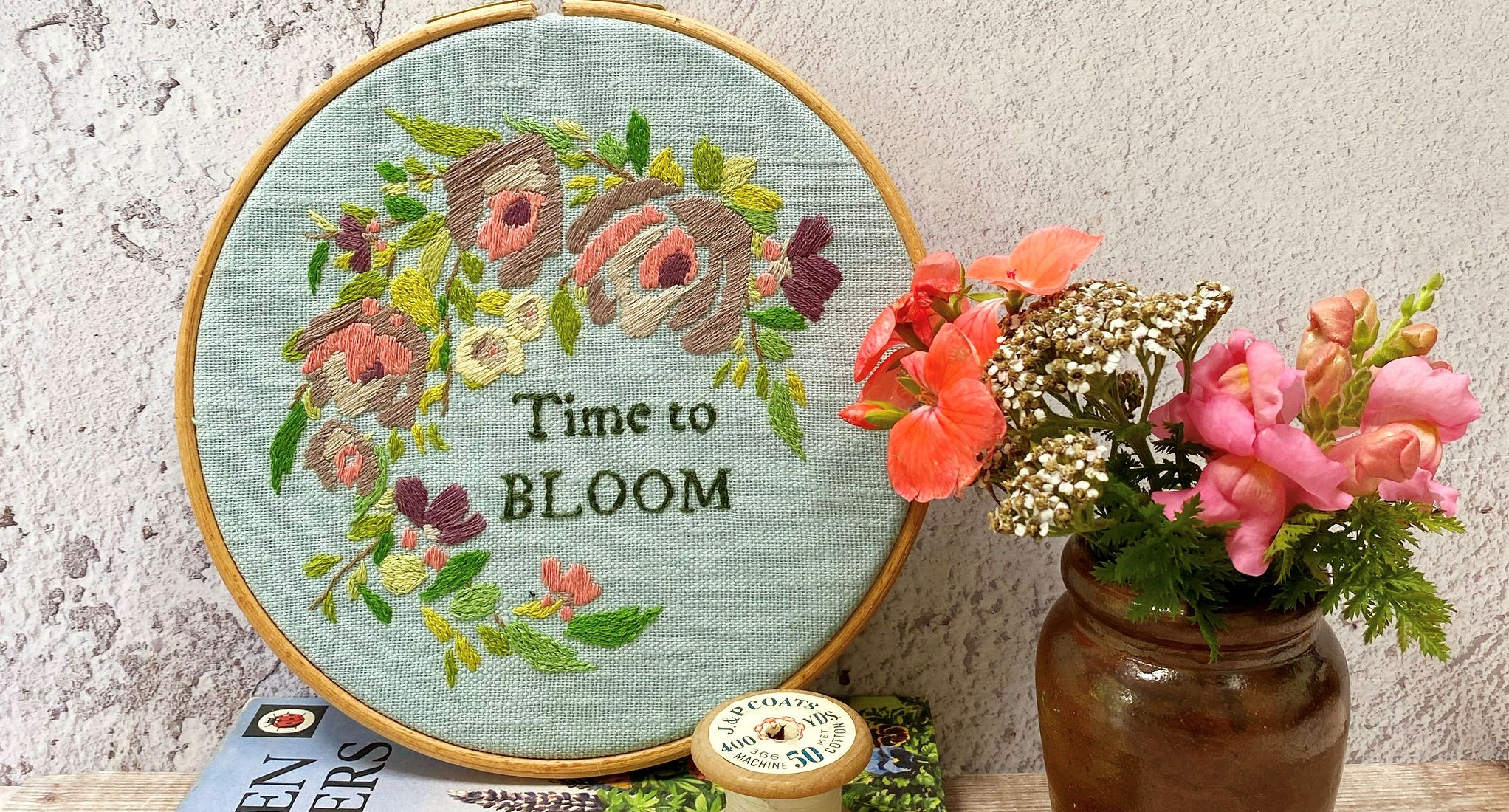
Last weekend we said farewell to the dogs (and chickens!), packed the car and headed off down to Devon for a short break. We were very lucky with Saturday’s weather and spent most of the day on the beach, much to Freddie and Florence’s delight. Sunday dawned cloudy and damp, so we decided to take a bit of a busman’s holiday and headed off to the Dartmouth steam railway. It was great to wander around the town again, so much and yet so little has changed since I last visited Dartmouth pre-covid, or indeed since I used to live nearby, eight whole years ago now. It was a day filled with laughter and memories, ice cream, watching the boats chug past and catching a bucketful of crabs along the embankment.
I have always enjoyed blackberrying along the hedgerows, since my mum used to take me out more years ago than I care to remember. I love this photo taken a decade ago of Ben and a very young Daisy as we returned from blackberrying around Salcombe….

Nowadays I don’t have to go very far at all for sweet juicy blackberries as they grow in profusion along our garden fence and the railway sidings…
 Ripe and ready for the picking! As well as blackberry clafoutis (I shared the recipe a little while ago here) I love to make my mum’s blackberry and apple pie.
Ripe and ready for the picking! As well as blackberry clafoutis (I shared the recipe a little while ago here) I love to make my mum’s blackberry and apple pie.
 Blackberry and Apple Pie
Blackberry and Apple Pie
For the shortcrust pastry:
6 oz (175 g) plain flour
pinch salt
1½ oz (40 g) lard (or solid baking fat if preferred)
1½ oz (40 g) butter
For the filling:
4 medium cooking apples, about 1 lb (450 g)
8 oz (225 g) brambles or fresh or frozen blackberries, defrosted if frozen, and washed
3 oz (75 g) sugar
To glaze:
milk and caster sugar
Start by making the pastry:
Sift the flour and salt into a large mixing bowl. Cut the fat into small cubes and add to the flour. Now, using your fingertips, lightly and gently rub the pieces of fat into the flour. When the mixture looks uniformly crumbly, start to sprinkle roughly 2 tablespoons of cold water all over.
Use a round-bladed knife to start the mixing, cutting and bringing the mixture together. Carefully add more water if needed, a little at a time, then finally bring the mixture together with your hands to form a smooth ball of dough that will leave the bowl clean (if there are any bits that won’t adhere to it, you need a little extra water).
Wrap the pastry in foil or cling film in the fridge for 20-30 minutes while you peel, core and slice the apples straight into the pie dish. Then sprinkle in the brambles or blackberries and the sugar. Now roll out the pastry to about 1″ larger than the pie dish, then cut out a 1″ strip to fit the edge of the dish. Dampen the edge with water, then fit on the strip of pastry, pressing it firmly, and dampen that too.
Press the rest of the pastry over that to form a lid and, using a sharp knife, trim any excess pastry off. Use the blunt side of the knife and your thumb to press the two edges firmly together and knock the edges all round to give a layered effect. Flute the edges by using your thumb to make an impression and the broad blade of the knife to draw in the edges of the pastry. Make a steam hole in the centre.
Brush the pastry with milk and sprinkle on a light dusting of caster sugar. Place the pie on a baking sheet on a high shelf and bake 220C at for 10 minutes, then reduce the heat to 190C and continue baking for a further 30 minutes. Then, using a skewer, take out a piece of apple from the centre to test if it’s cooked: if it still feels very firm, give it another 5 minutes.
Serve with cream, clotted cream, custard or ice cream depending on personal preference – all are equally delicious!

And finally, I’d like to thank everyone who emailed me in response to my question about grading patterns into difficulty levels. There were lots of different suggestions and comments, but the one that really made me think came from Jenny who said…
Grading patterns could be a helpful indication, but to a poor stitcher, the disappointment of failing to achieve on a ” beginner” pattern can be very demotivating.”
I hadn’t thought of it that way, but do understand what Jenny is saying, and I most certainly don’t want to demotivate anybody. So I think that for now at least I won’t try to grade patterns, but will simply detail stitches used and offer my thoughts on level of complexity when I list patterns either on the website or over in my Etsy store.
Leave a Reply